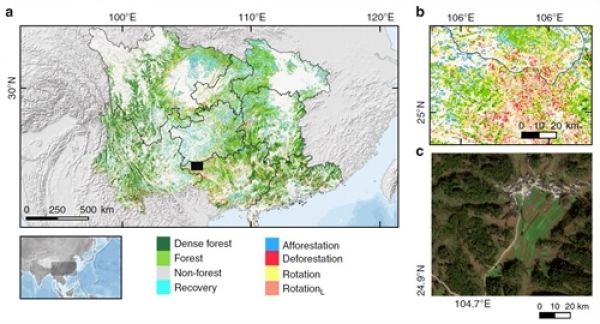Recently, researchers from the Institute of Subtropical Agriculture (ISA) of the Chinese Academy of Sciences, together with collaborators from home and abroad, identified different forest and land management strategies as well as their biomass carbon sinks from 2002 to 2017 in southern China by combing optical and low frequency passive microwaves satellite data. They also evaluated soil moisture trends from 2010 to 2017 for this area.
Mitigating climate change while improving people's life is a big challenge in the 21st century. Forestation can generate income and sequesters carbon in tree biomass, which is considered a possible way to limit global warming. However, the competition for land between forestation and food production increases with population growth.
Moreover, large-scale forestation can induce negative ecological effects. For example, the high water demand of new plantations can decrease soil moisture and renewable freshwater resources. However, neither the carbon sequestration of different forestation types nor their impact on soil water is well known.
Continue reading at Chinese Academy of Sciences
Image via Chinese Academy of Sciences


